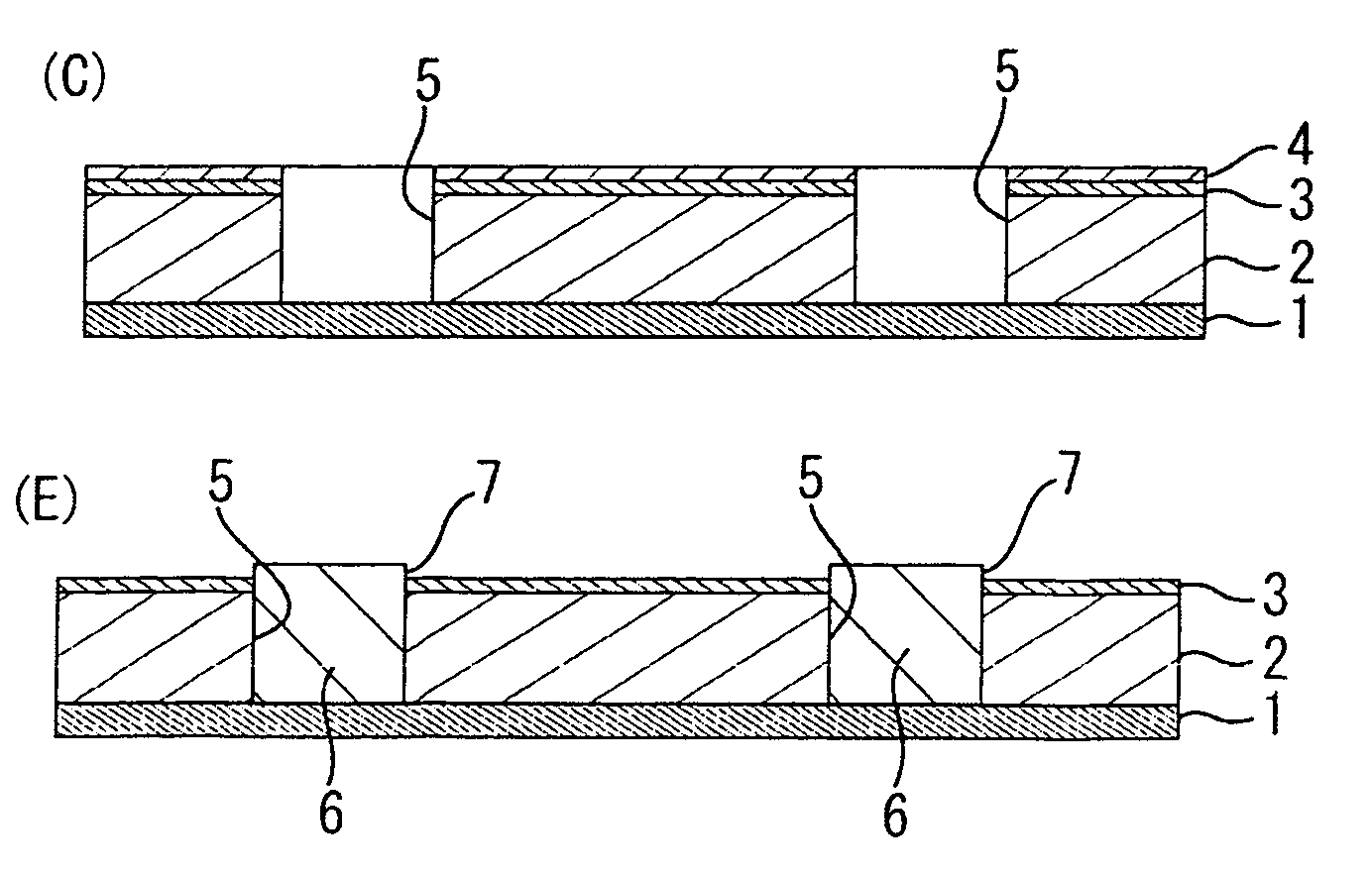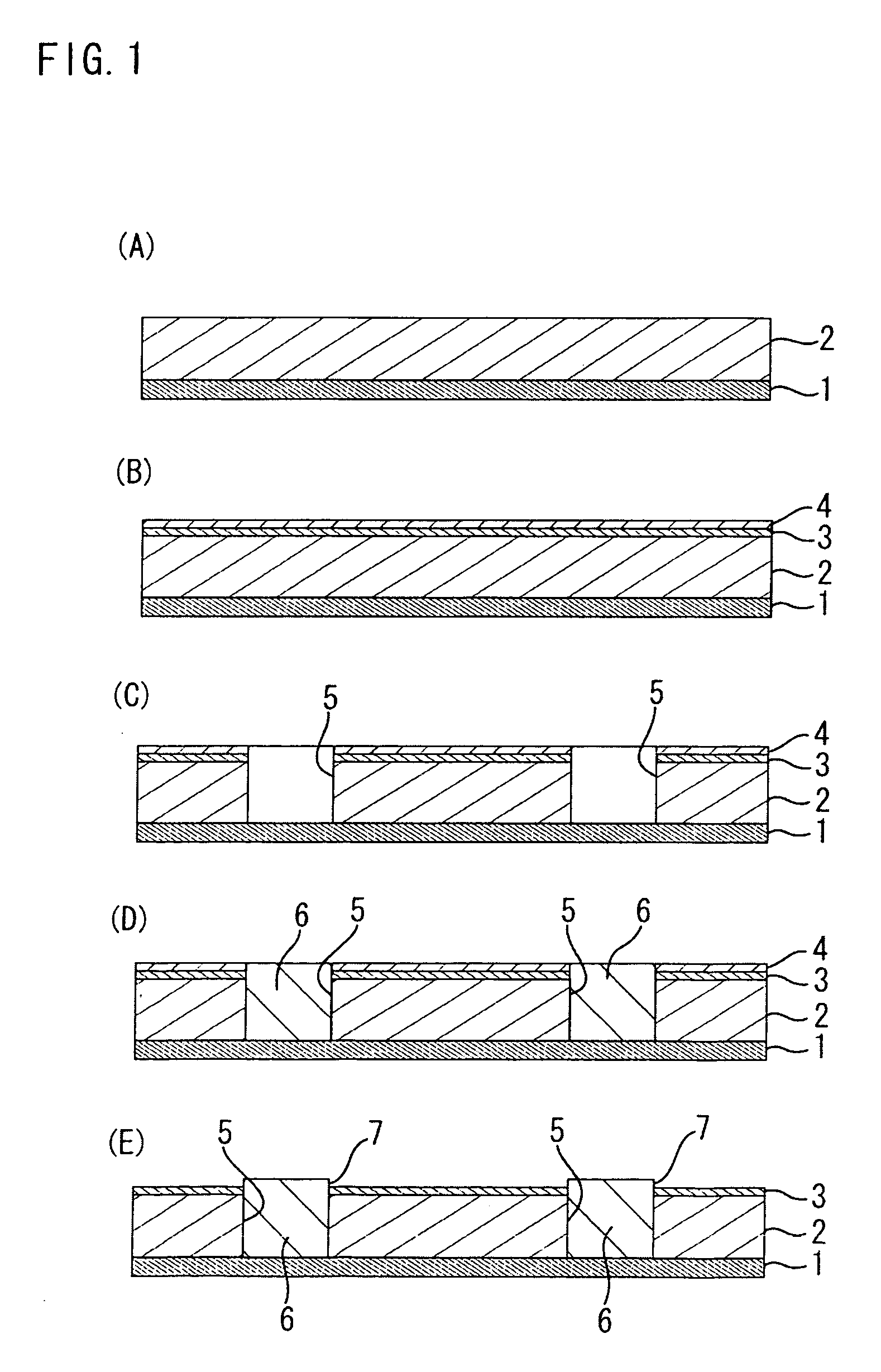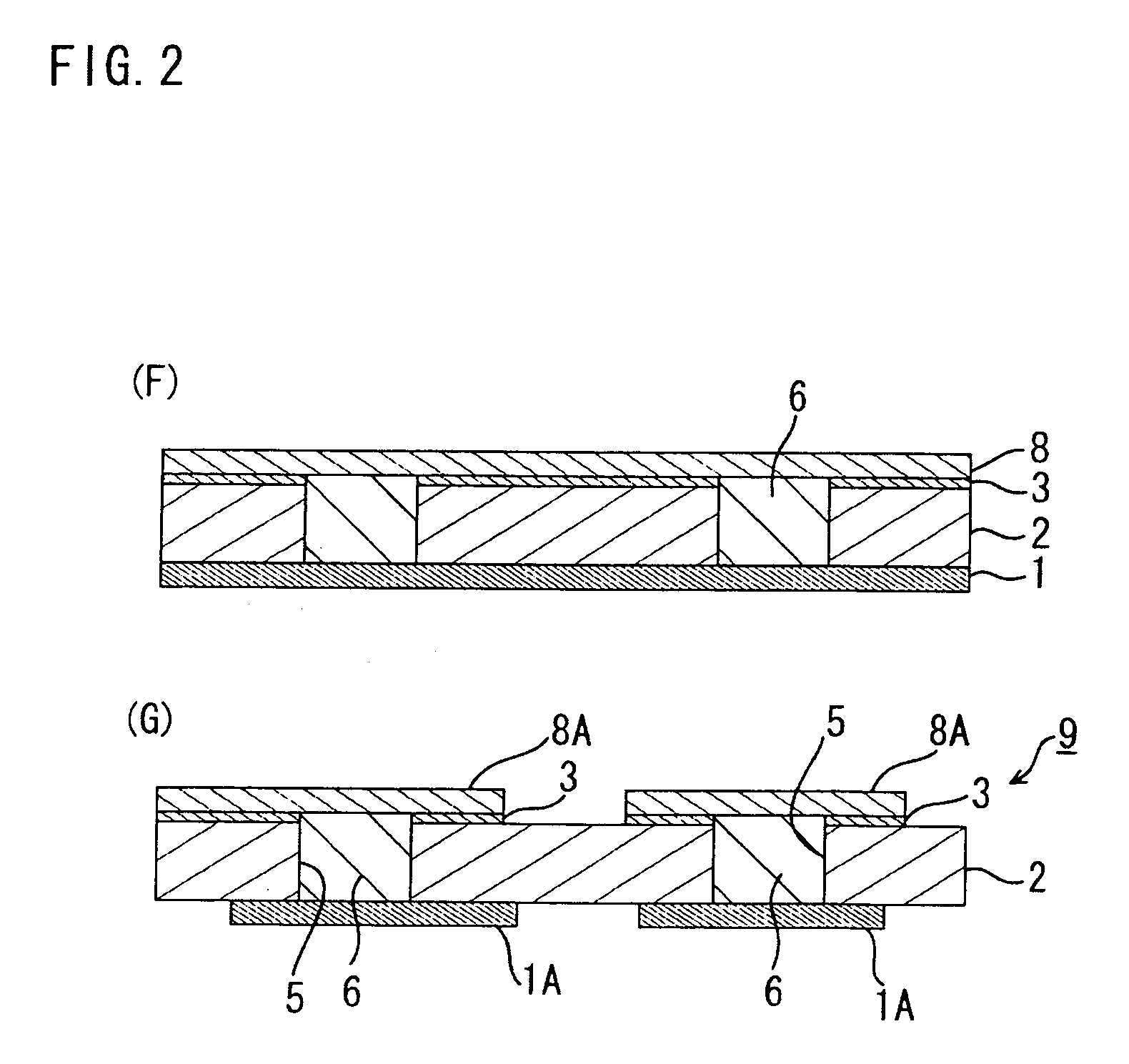Method of manufacturing printed-circuit board
a manufacturing method and technology of printed circuit boards, applied in the direction of printed element electric connection formation, insulating substrate metal adhesion improvement, conductive pattern formation, etc., can solve the problems of air bubbles remaining in the filled conductive paste, air bubbles trapped in the conductive paste, interlayer connection resistance may become unstable, water may accumulate in the air bubbles, etc., to reduce the reliability of connection, reduce manufacturing cost, and high density
- Summary
- Abstract
- Description
- Claims
- Application Information
AI Technical Summary
Benefits of technology
Problems solved by technology
Method used
Image
Examples
first embodiment
(First embodiment)
[0069]Next, the first embodiment of the present invention will be described with reference to FIG. 1 to FIG. 4.
[0070](Preparation of conductive paste)
[0071]As a conductive filler, 100 weight parts of flake-like silver having an average particle diameter of 10 μm were used. For a binder, 3.2 weight parts of a novolac epoxy resin having a molecular weight of 600 and 3.2 weight parts of a phenolic plastic having a molecular weight of 10000 to 15000 were used as thermosetting resins, and 6.8 weight parts of ethyl carbitol acetate were used as a solvent. The binder was prepared by mixing together the novolac resin and phenolic plastic, which are both solid at room temperature, and adding the ethyl carbitol acetate to dissolve the resins. The resultant matter obtained by adding and mixing silver to this binder was used as a conductive paste.
[0072]When conventional liquid epoxy resins of low molecular weight are subjected to pre-cure treatment, they start a cross-link re...
second embodiment
(Second embodiment)
[0089]In stead of the conductive paste 6 described in the first embodiment, two kinds of conductive pastes of low viscosity and of high viscosity can be used to fill the VH. Hereinafter, it will be described how this method is used to manufacture a multilayer wiring board. For example, as a low-viscosity conductive paste, a paste containing a filler of silver-plated copper particles and having a viscosity of 0.9 Pa·s is injected into an opening up to the height of 2 / 3 of a VH diameter, wherein the opening is for forming the VH and is formed by laser beam machining, such as the VH 5 shown in FIG. 1(C) or FIG. 3(D). Further, as a high-viscosity conductive paste, a paste containing a filler of silver-plated copper particles or silver particles and having a viscosity of 4 Pa-s is successively filled into the opening by using a metal mask having an opening diameter of 200 μm and a thickness of 100 μm, stacking over the low-viscosity conductive paste, thus forming VH. A...
third embodiment
(Third embodiment)
[0093]The third embodiment will be described with reference to FIG. 5 to FIG. 6.
[0094]Copper foil 102, for example, is provided on the whole underside of an insulating substrate 104 for forming a circuit board 101 (FIG. 5(A)). Further, after forming a conductive bump 103, this copper foil 102 is etched to form a conductor circuit. As shown in FIG. 5(B), two sheets of peeling coatings 105 and 106 are bonded on the upper surface of this insulating substrate 104 (by the way, hereinafter, a peeling coating of the upper side 105 is referred to as a first peeling coating 105 and a peeling coating of the lower side 106 is referred to as a second peeling coating 106). Both peeling coatings 105 and 106 are made of PET. Although not shown in detail, the undersides of both peeling coatings 105 and 106 are provided with an adhering agent layer.
[0095]Next, a VH 107 is formed at a predetermined position by a CO2 laser (FIG. 5(C)). The VH 107 passes through both peeling coatings...
PUM
| Property | Measurement | Unit |
|---|---|---|
| glass transition temperature | aaaaa | aaaaa |
| viscosity | aaaaa | aaaaa |
| viscosity | aaaaa | aaaaa |
Abstract
Description
Claims
Application Information
 Login to View More
Login to View More - R&D
- Intellectual Property
- Life Sciences
- Materials
- Tech Scout
- Unparalleled Data Quality
- Higher Quality Content
- 60% Fewer Hallucinations
Browse by: Latest US Patents, China's latest patents, Technical Efficacy Thesaurus, Application Domain, Technology Topic, Popular Technical Reports.
© 2025 PatSnap. All rights reserved.Legal|Privacy policy|Modern Slavery Act Transparency Statement|Sitemap|About US| Contact US: help@patsnap.com



